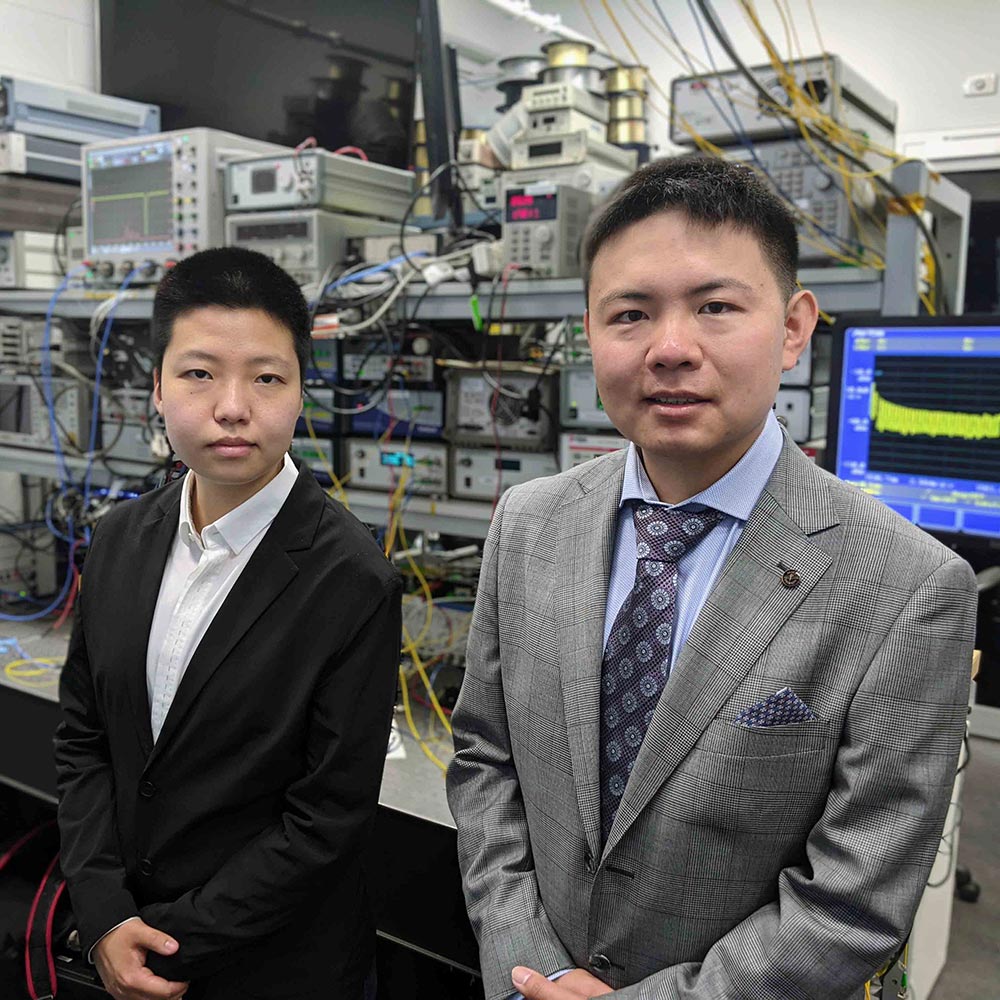
With this technology, a low-cost and low-power collision avoidance system could be fitted onboard driverless cars. It could also monitor weather patterns and process biomedical images at rapid speeds.
Our brains – the most sophisticated computers on earth – capture and process huge amounts of information from our eyes that help us to make rapid decisions, like slamming the brakes on to avoid a car crash.
Currently, the closest thing to emulating these processing speeds are racks of traditional digital computers which are currently too large and power-hungry to fit into every driverless car.
We teamed up with an international team of researchers including Swinburne and Monash universities to investigate how we can use light to achieve brain-like functionality – all with vastly reduced power requirements on a chip smaller than a five-cent piece.
Our team wanted to create an artificial neural network that could extract key features of raw data – like the shape of a tree or person – and teach it to attach meaning to what it’s seeing, just like the brain’s visual cortex.

Published in the prestigious journal Nature, our team demonstrated the world’s fastest brain-like processor for AI, capable of processing mammoth amounts of data at 10 trillion operations per second – 10,000 times faster than any other optical neural processor to date.
The chip was made from previously designed and validated components that can be integrated together in a chip the size of a fingernail.
With this technology, driverless cars could now have a real-time collision avoidance system on board that is compact, low-cost and energy efficient. It could also monitor weather patterns and process biomedical images at rapid speeds.
Collaborating with InPAC was crucial in creating the world’s fastest optical AI accelerator to allow us to initiate the ideas and validate the success of our experiments.
- Dr Xingyuan (Mike) Xu
Swinburne, Monash University
Sept 2019: First team meeting with Swinburne and Monash Universities talking about the possibility of the project
Sept 2019: Design experiments to use micro-comb for neuromorphic applications
Oct 2019: Carry out experiments and write draft on the results
April 2020: Submitted Nature paper
Oct 2020: Nature paper announced
June 2021: Now we have another alternate to replace the off-chip weighting and signal feeding functionalities
Ongoing: Now Guanghui and Thach are looking at integrating new materials to make it more compact and powerful
Read more about the partnership in the article Fastest optical processor.


RMIT University acknowledges the people of the Woi wurrung and Boon wurrung language groups of the eastern Kulin Nation on whose unceded lands we conduct the business of the University. RMIT University respectfully acknowledges their Ancestors and Elders, past and present. RMIT also acknowledges the Traditional Custodians and their Ancestors of the lands and waters across Australia where we conduct our business - Artwork 'Sentient' by Hollie Johnson, Gunaikurnai and Monero Ngarigo.
Learn more about our commitment to Indigenous cultures